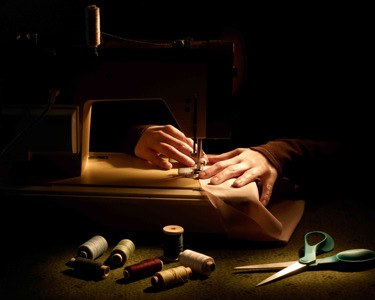
Justus writes to us to ask: My family has been divvying up my grandfather’s clothes after he recently passed away. Most of it is too large for me, but he did have some very nice silk ties. The problem is, they’re all very wide – about 5″ or so. Can I get them narrowed, and if so, what should I expect to pay? And is the amount worth it or should I just buy new ties?
You can definitely narrow a tie, and the good news is: it’s not a difficult job. You just have to find someone with experience (make sure they don’t flatten the tie when they press it). Expect to pay anywhere from $10 to $25 for the work. A small price, we think, if the tie holds sentimental value.
Many tailors will alter ties, but if you can’t find someone local, I’ve had great success sending my ties to TieCrafters, a specialty shop in NYC. They have over sixty-three years of experience in the trade – cleaning, repairing, and altering ties and scarves – and were recommended by Alan Flusser in his book Style and the Man. Shipping back and forth will add to your cost, but they do great work.
Other notable services from TieCrafters, which can help breathe new life into old ties:
- Alterations: In addition to narrowing, TieCrafters can also widen and shorten ties. The only issue with widening is the material. Andy Tarshis, president of the company, tells us that woven silks can be more stubborn than printed silks, wools, and linens. “Woven silks have a tendency to show lines where the tie was previously creased,” he says. “It can also be tough to widen a tie if it’s been hard pressed, but we can take a look at a tie before starting a job.”
- Repairing: Ties can break down in any number of ways. The interlining can stretch out and curl (making it difficult to get a good dimple); the back of the blade can start to fray (from years of rubbing against your belt); and the neckband can start to thin out. Any of these issues can be repaired, although with thinning neckbands, you can wind up with a seam under where you typically knot (and about three inches less off the length). That’ll require a bit more playing around when you’re tying your tie – so that the seam is buried under the knot – but the extra effort might be worth it if the tie is special to you.
- Cleaning: You often hear that a tie’s life ends when a meatball rolls down the front, but that’s just because most dry cleaners aren’t equipped to clean ties. They throw them in big cleaning machines, which in turn ruins the silk. TieCrafters, on the other hand, spot cleans with special equipment – and although they can’t get all stains out, they’ll be a lot better than your local cleaner. “Alcohol can pull color and ink can be stubborn,” says Tarshis. “But most food stains are fine – so long as we get a tie sooner, rather than later. Time sets stains.”